
The Bottom Line
Introduction, Specifications, and Pricing
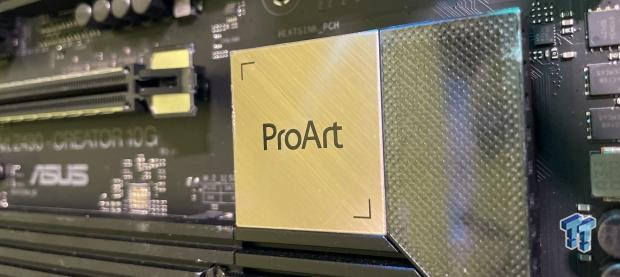
ProArt is a niche lineup designed for creative professionals who need the very best in platform connectivity. This lineup aligns ASUS to offer a competing product against the GIGABYTE Designare lineup. It does that by providing a Z490 chipset design backed with integrated Thunderbolt 3, 2.5Gbe LAN, and additional 10GBe by way of an AIC.
A large part of the board's design is quite similar to the Z490 Prime we most recently reviewed, sharing similar components and board design, including power stages, LAN controllers, and USB 3.2 design. We will run over the full specs of this board below.
Specifications and Marketing
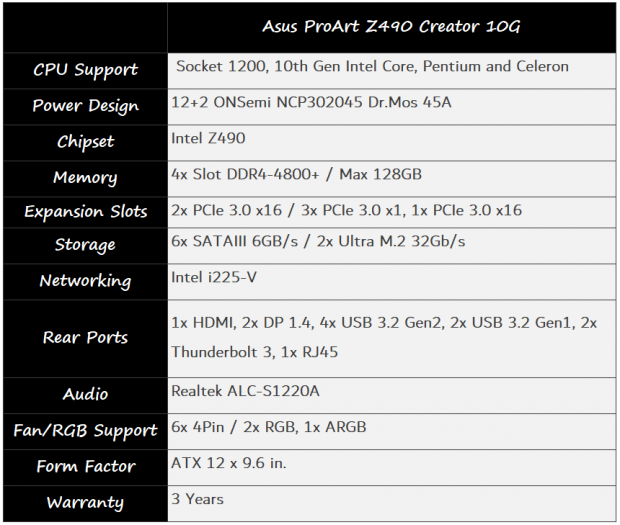
Board specifications start with the Intel LGA1200 socket, compatible with all 10th Generation processors, including Core i3, i5, i7, and i9. Those on a budget can also install Pentium Gold or Celeron processors. Power design is supported by a 12+2 design for CPU and memory. ONSemi supplies the power stages, with each running at 45A, giving the CPU a total of 540A. Memory is supported with four DDR4 slots, speeds up to 4800MHz via overclocking.
Expansion is handled by 2x PCIe 3.0 x16 slots from the CPU and another three x1 slots, and an x16 electrically limited to x4 from the chipset. 6x SATAIII ports give way to the Ultra m.2 storage configuration that includes two slots, one of which is heatsinked.
The Intel i225-V handles LAN duties on this board with an included 10Gbe card as a secondary option. No Wi-Fi option is available on this board, but we do have the ever popular ALC1220 from Realtek handling audio.
Pricing
The ASUS ProArt Z490 Creator carries an MSRP of $299.99 with a three-year warranty.

Packaging, Accessories, and Overview
Packaging and Accessories
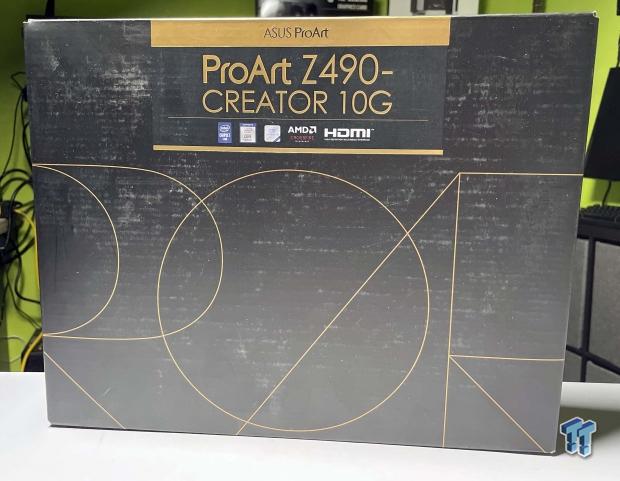
The packaging offers a luxury appeal with black and gold aesthetics. Support technologies are listed under the model number centered.
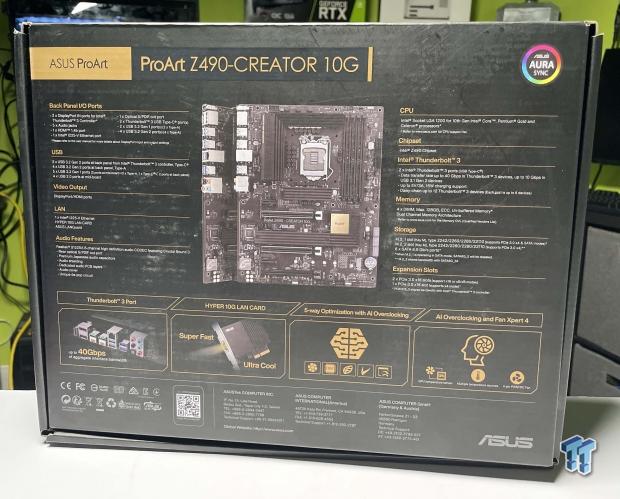
The box's rear offers board specifications along with an I/O overview and features listed to the right.
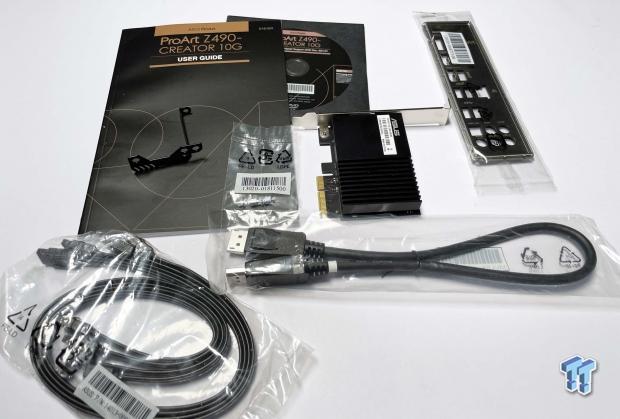
Scope of delivery includes the rear I/O shield, 10Gbe AIC, and DP cable. We also have a user guide and SATA cables.
ASUS ProArt Z490 Overview
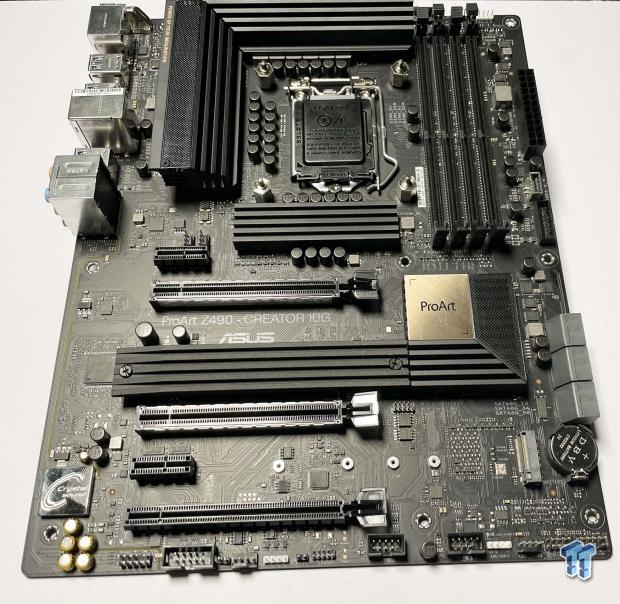
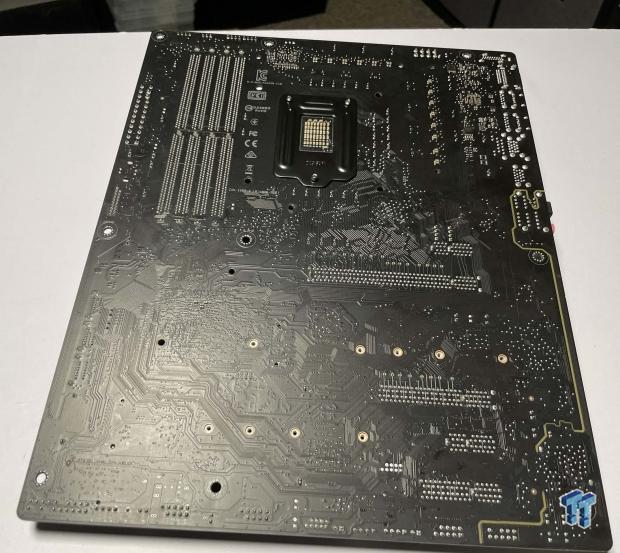
Compared to past boards reviewed on the Z490 platform, the ProArt is pretty bare with nearly no plastics included, instead a basic design with black aluminum heat sinks and gold heat sink cover. Like the Prime Z490, the ProArt uses a parallel design, so no doublers will be found on the back.
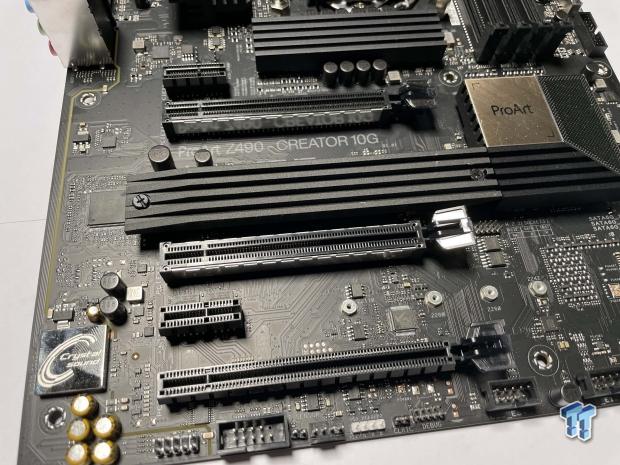
The board's bottom edge gives front panel audio, USB headers, and fans along with RGB. We also have two z16 slots metal shielded, the top m.2 slot heatsinked in the center of the board.
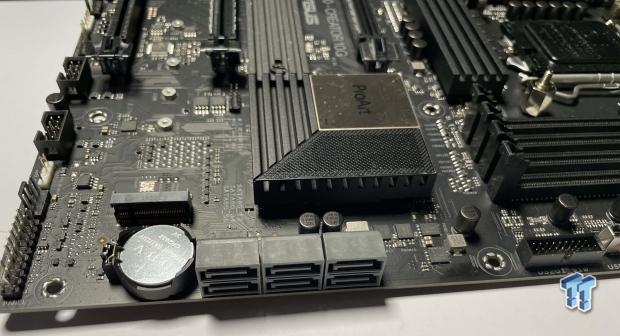
Around the side, we have the 6x SATA ports and USB 3.2 internal headers.
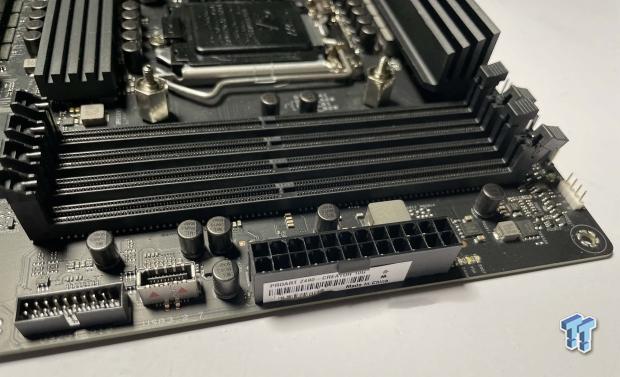
Further up the same side, we have the 24 pin power connection.
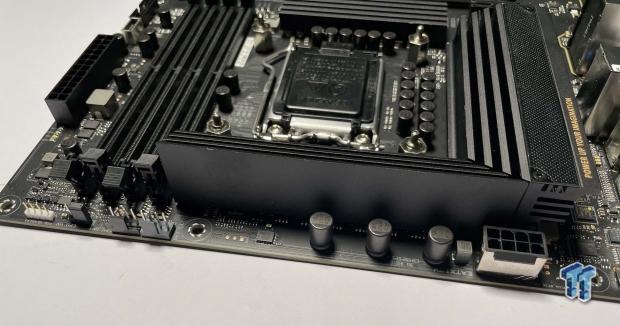
Across the top, we have RGB headers, fan connections, and the 8-pin CPU power connection.
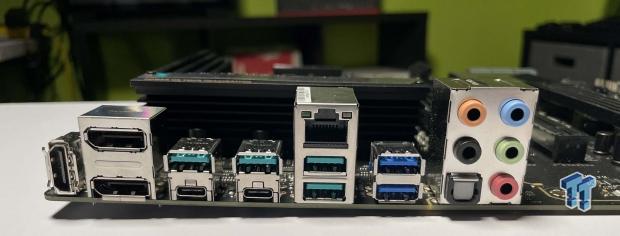
Rear I/O starts at the top with HDMI followed by two DP ports, which are inputs for the motherboard. Further down, we have the Thunderbolt 3 ports with Type-A USB 3.2 Gen 2 on top and 2.5Gbe LAN paired with Gen 2 USB 3.2. The dark blue USB 3.2 Gen 1 ports round out the right side of the rear panel with Audio connections.
PCB and Circuit Analysis
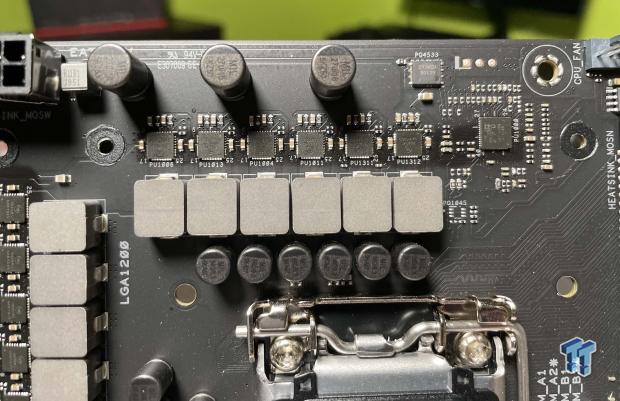
The power design features 14 power stages, 12 for the CPU each 45A run in parallel to give each channel 90A capability. These are ONSemi NCP30245 controlled by the DiGi+ VRM from ASUS.
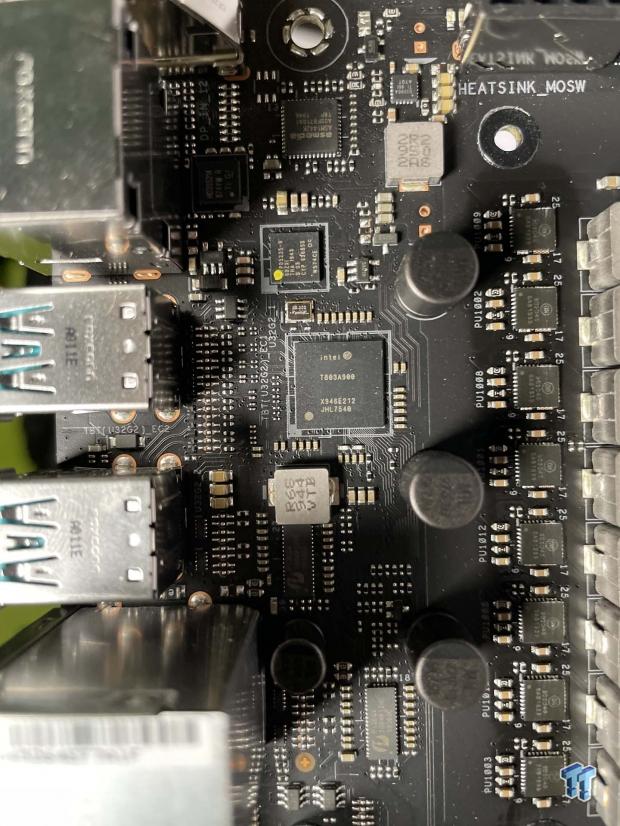
The Thunderbolt 3 controller can be seen above, the Intel JHL7540; two-channel Titan Ridge design.

This image shows the Z490 chipset design.
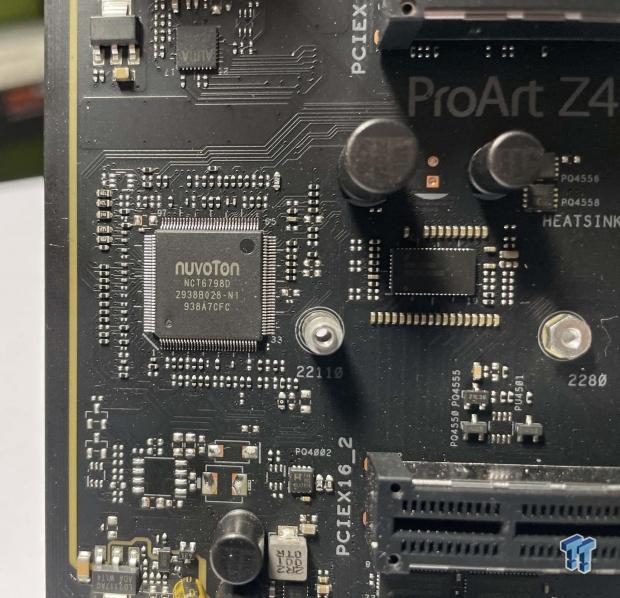
Nuvoton again controls Super I/O for the ProArt.
UEFI, Software and Test System
UEFI
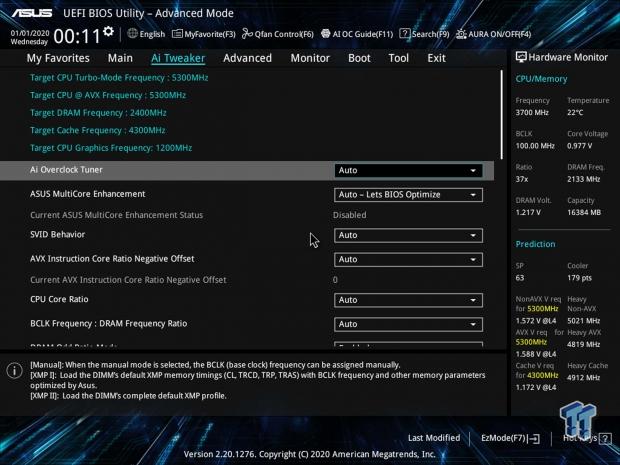
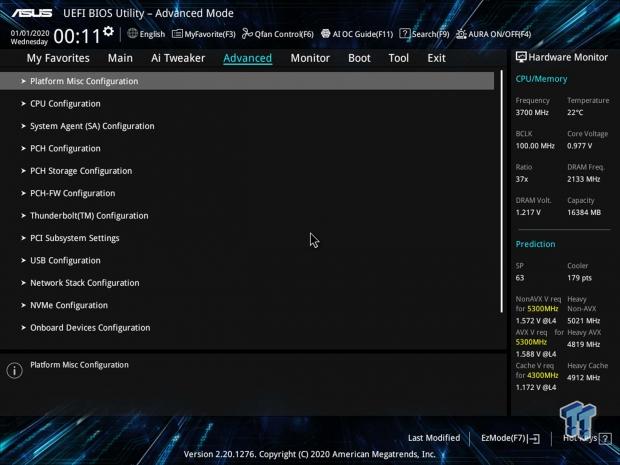
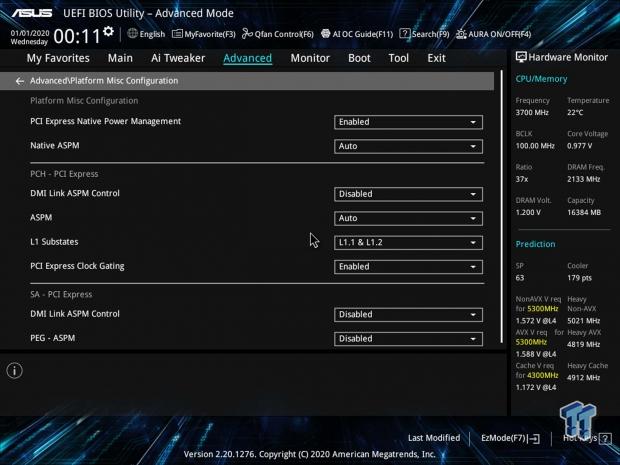
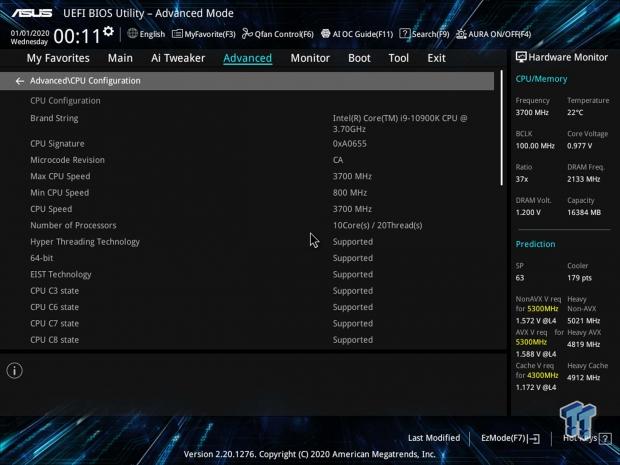
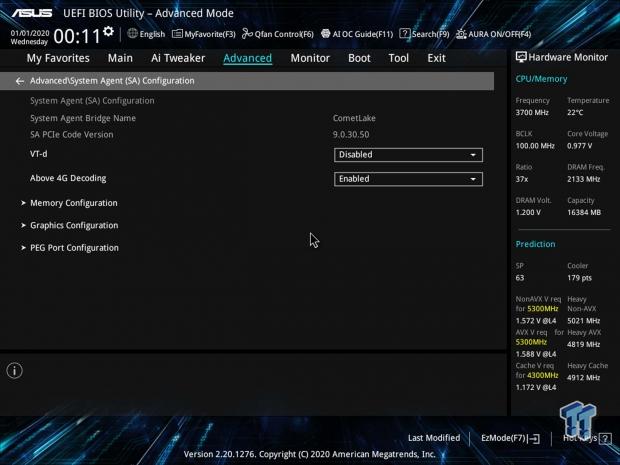
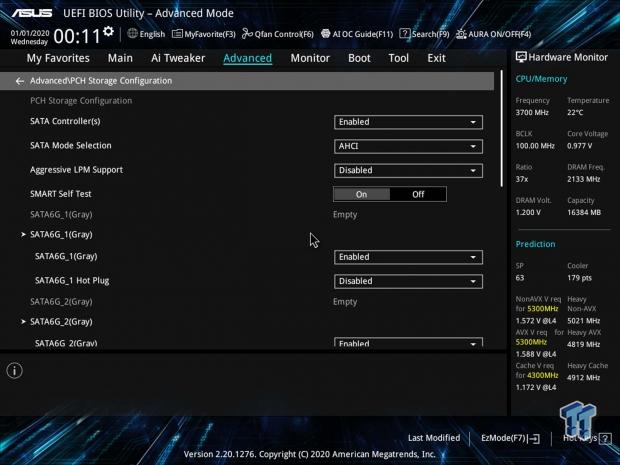
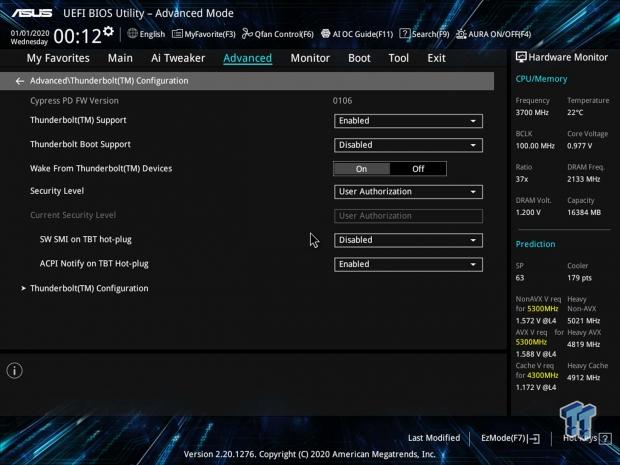
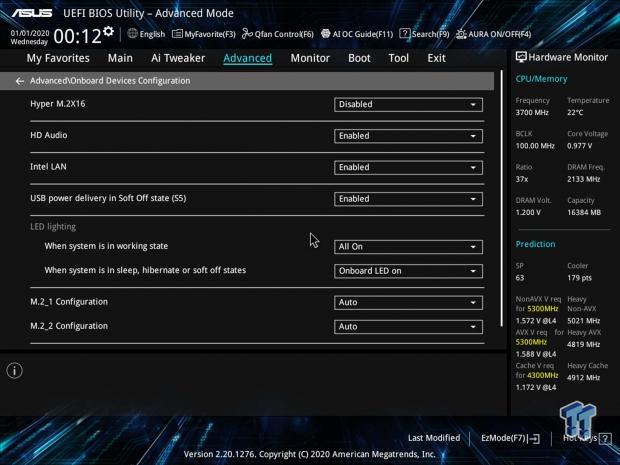
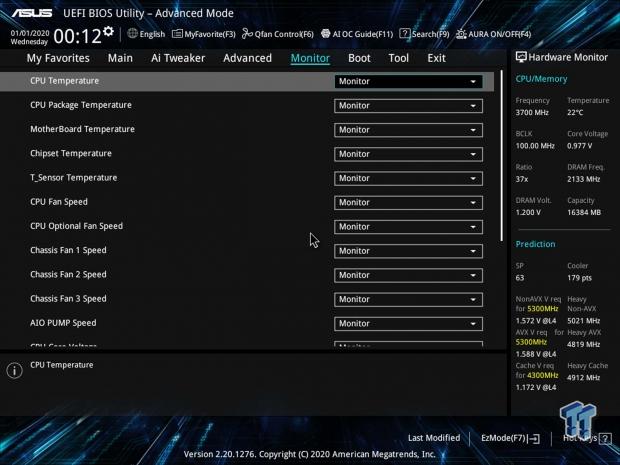
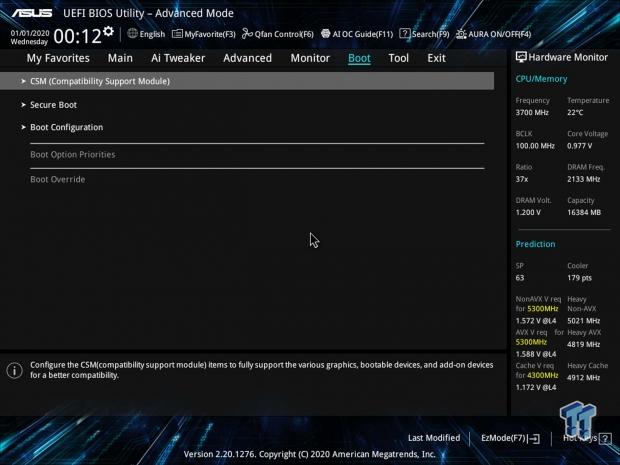
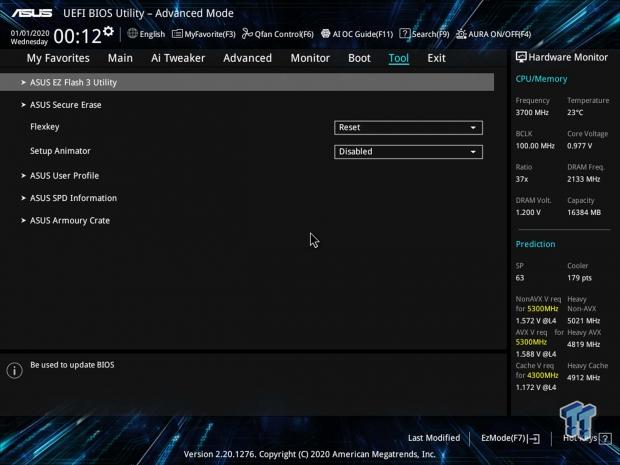
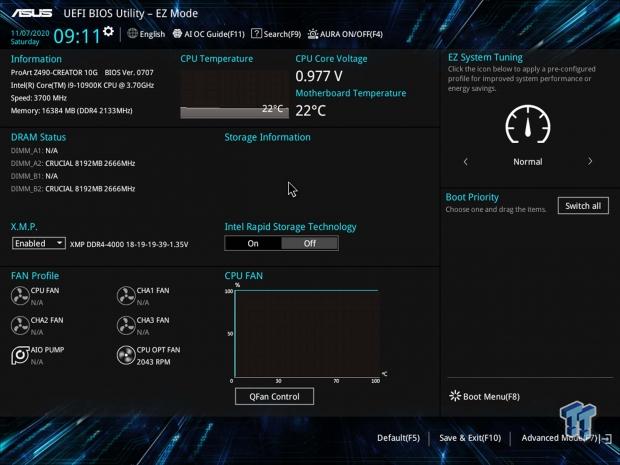
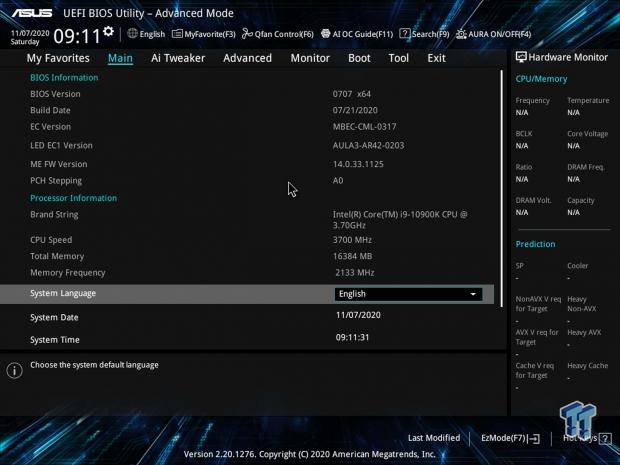
Setup is the default EFI design from ASUS. You will find this used on all Prime and ProArt boards along with CSM lineups as well. This is a well laid out solution similar to the ROG BIOS platforms with a main section to show system specs, AI Tweaker for overclocking CPU and memory. Advanced will push you through onboard device configuration such as audio, LAN, and Thunderbolt 3.
The monitor section offers temperatures and fan control options, while the tools menu gives you the ability to flash BIOS, secure erase your SSDs, or set up profiles.
Test System
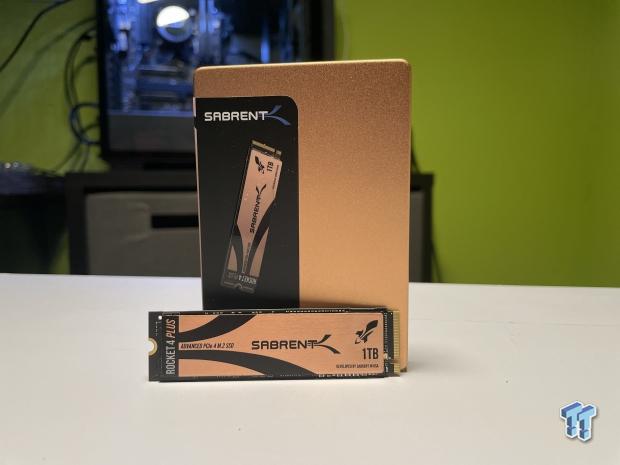
Sabrent has been a fantastic vendor to work with over the last year, and they continue to support AMD and Intel motherboard testing with their Rocket4 Plus built on the Phison E18 platform.
- Motherboard: ASUS ProArt Z490 Creator 10G (buy from Amazon)
- CPU: Intel Core i9 10900K (buy from Amazon)
- RAM: ADATA XPG 2x16GB Spectrix (buy from Amazon)
- Cooler: EKWB Quantum Power 360 (buy from Amazon)
- OS Storage: Sabrent Rocket4 Plus NVMe 4.0 (buy from Amazon)
- Power Supply: Corsair RM750 (buy from Amazon)
- OS: Microsoft Windows 10 (buy from Amazon)
WPrime, Cinebench and AIDA64
WPrime
WPrime is a leading multi-threaded benchmark. In our setup, we will manually set the number of cores for the CPU under test. The ROG Maximus Extreme 12 is our baseline motherboard for all charts.
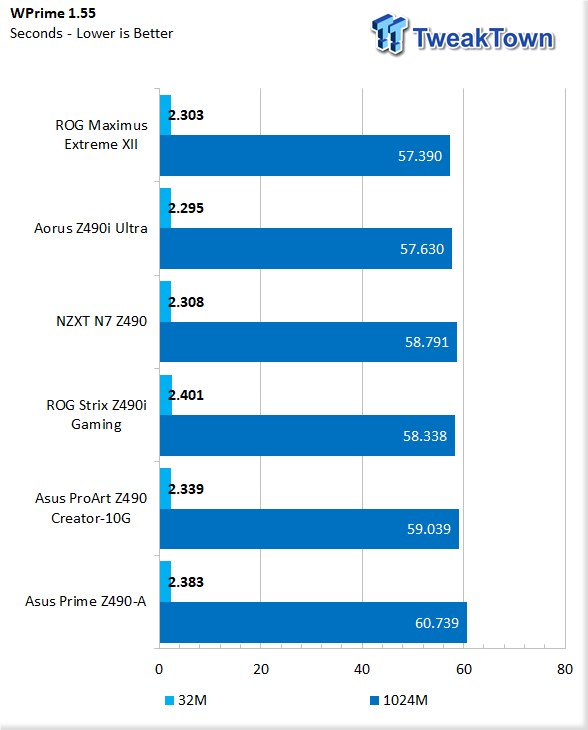
The ProArt was among the quicker boards in testing, showing 2.33 seconds at 32M and 59 seconds flat for 1204M.
Cinebench
Cinebench is a long-standing render benchmark that has been heavily relied upon by both Intel and AMD to showcase their newest platforms during unveils. The benchmark has two tests, a single-core workload that will utilize one thread or 1T. There is also a multi-threaded test that uses all threads or nT of a tested CPU
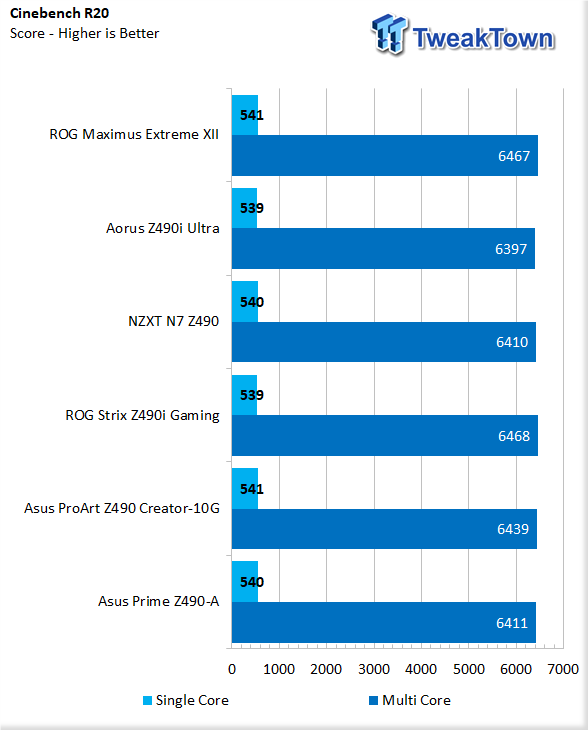
Cinebench gave up 541 points in single thread while reaching 6439 points multithread or nT.
RealBench
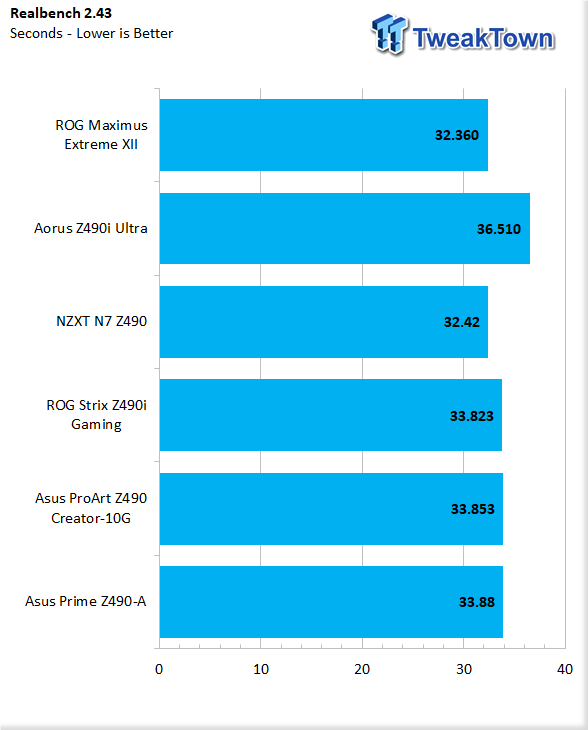
Realbench uses both video and photo workloads to benchmark your CPU. We use the Heavy Multitasking workload in this setup. 33.85 seconds was the time for the ProArt, a bit slower than the Prime but on par for the course.
AIDA64 Memory
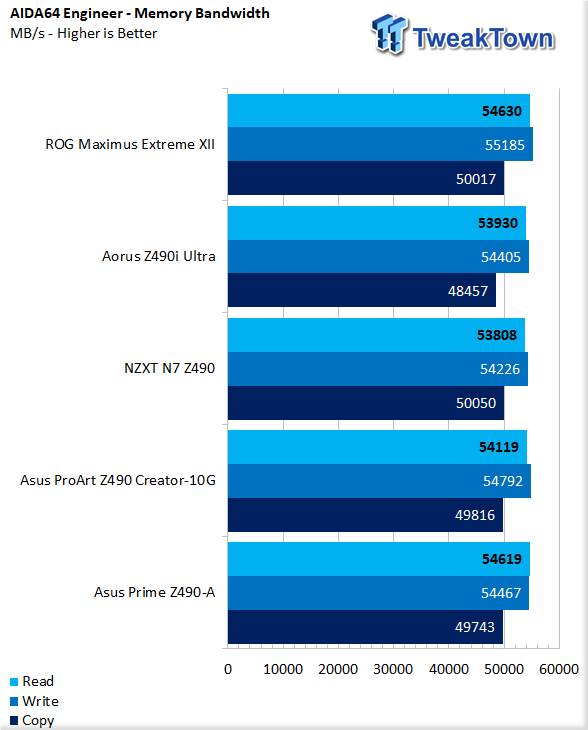
AIDA64 has stayed as our means of testing memory bandwidth. For this test, we find 54K read 54K write and 49K copy.
Unigine and UL Benchmarks
PCMark 10
PCMark is a benchmark from UL and tests various workload types to represent typical workloads for a PC. Everything from video conferencing, image import, and editing, along with 3D rendering, are tested.

Breaking down workloads, the ProArt reached 10377 for Essential with 11734 with Digital Content.
Unigine Superposition
Superposition from Unigine is a DX12 based benchmark. We test with the 720p LOW preset as this removes all but the most basic GPU loading, with all of the FPS coming from the CPU.
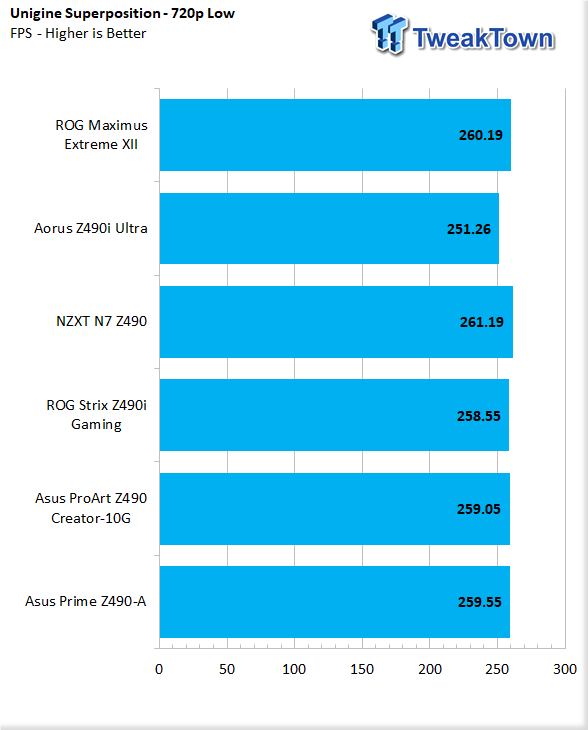
The ProArt Creator hits 259FPS, on par with current platforms in our charts.
3DMark Timespy
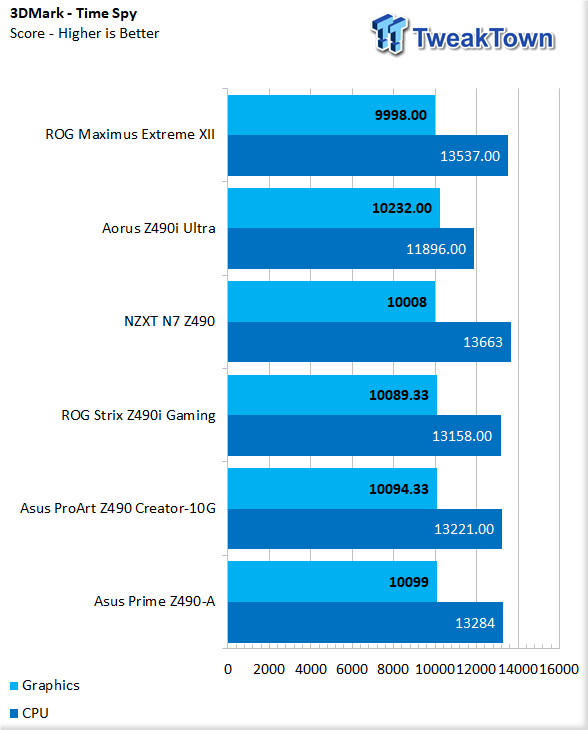
ProArt wrangled 13221 for the CPU score, passing 100094 for the GPU.
3DMark Firestrike
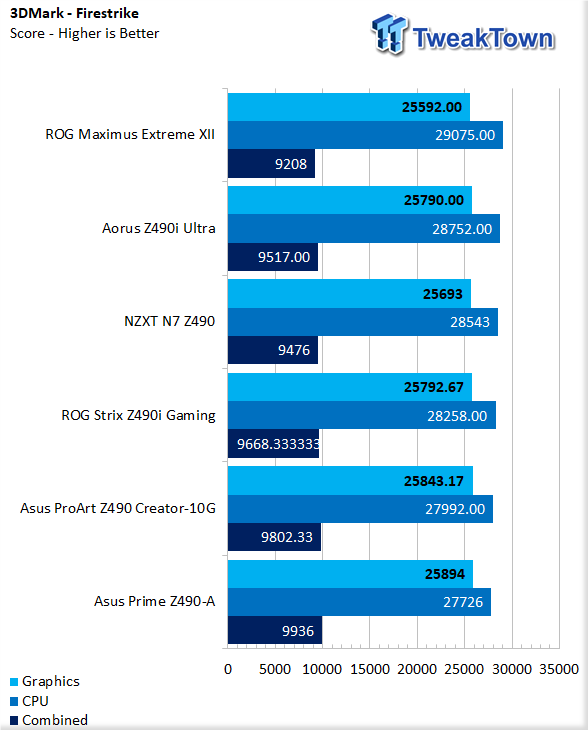
Firestrike showed a combined score of 9802 for the ProArt, quite a bit higher than past platforms and on par with the Prime Z490.
Shadown of the Tomb Raider
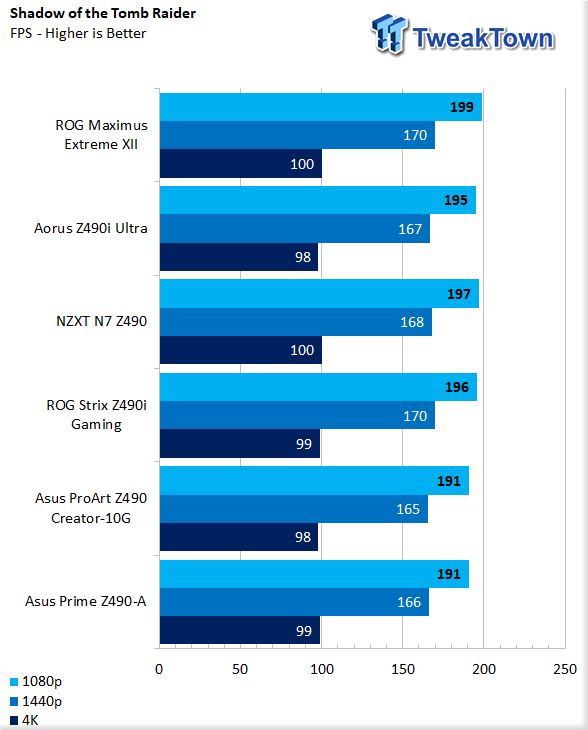
Running through Tomb Raider, we find an average FPS of 98 at 4K, 165 at 1440p, and 191 at 1080p with our RTX 3080.
System I/O Benchmarks and Power Consumption
System I/O Benchmarks
Storage with CrystalDiskMark
Storage tests are all handled by our Sabrent Rocket4 Plus NVMe 4.0 SSD for internal testing and our WD_BLACK P50 for external testing.
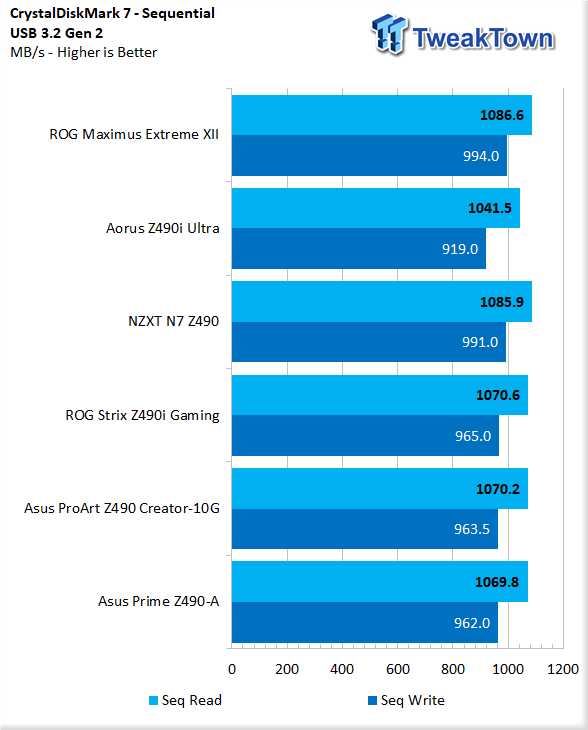
USB-C on the ASUS ProArt touched 1070 MB/s read and 963 MB/s write.
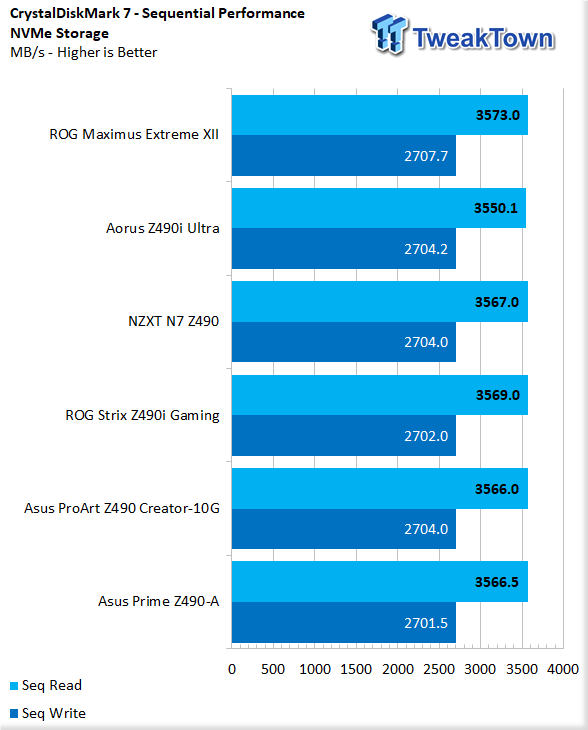
We went back and retested all of our boards with the new Rocket4 Plus. The ASUS Prime reeled in 3566 MB/s read and 2704 MB/s write.
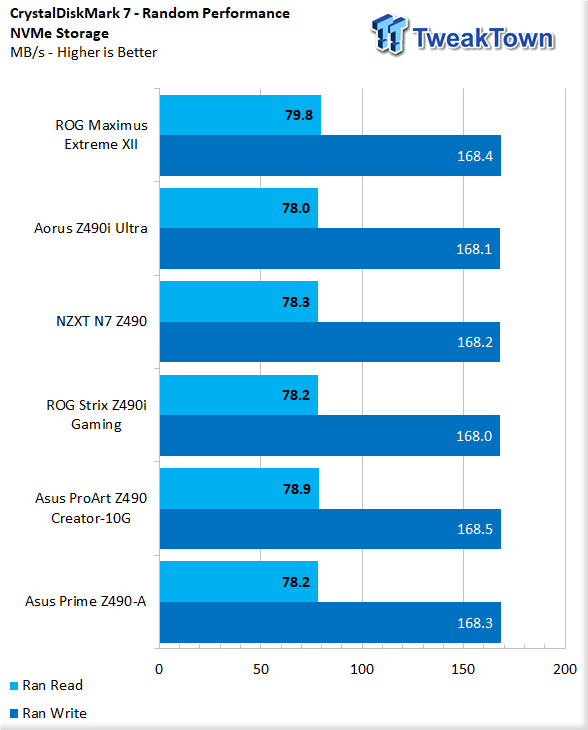
Random performance 4KQ1 touches 78 MB/s read and 168 MB/s write.
Networking with iPerf
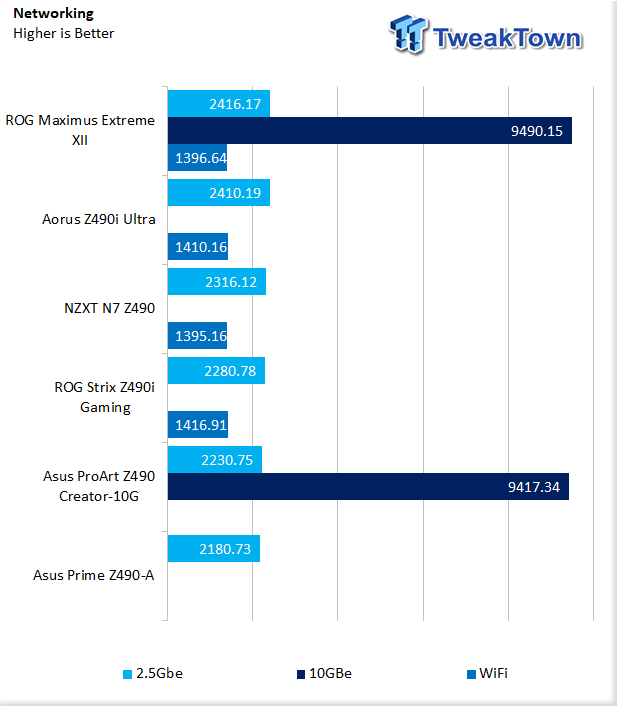
I tested both the integrated 2.5GBe and 10Gbe AIC with the ProArt. The 2.5Gbe brought 2230Mbps while the 10Gbe AIC was on par with 9417Mbps.
Power Consumption
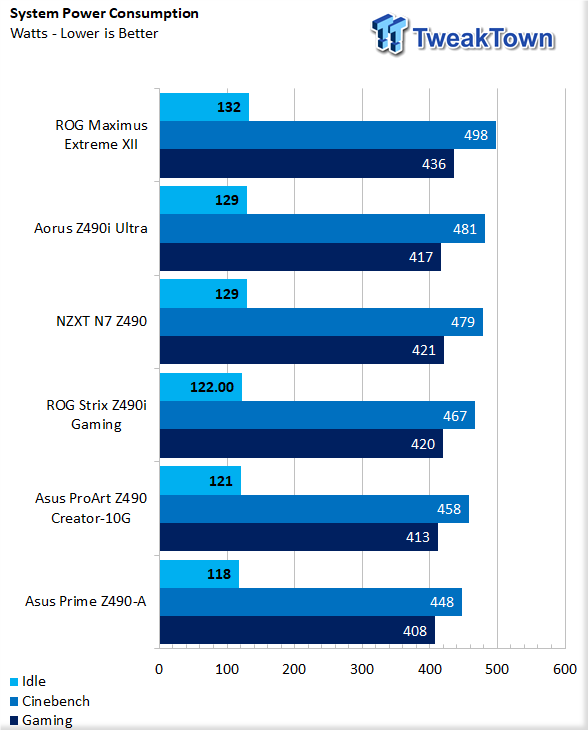
Power consumption ran at 121 watts idle, 458 watts during our CPU testing, and 413 watts gaming.
Overclocking, Thermals and Final Thoughts
Overclocking
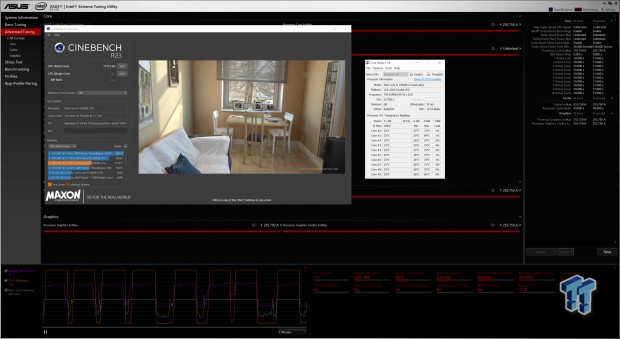
Overclocking on the ProArt Z490 Creator was nearly identical to the Prime Z490, which makes sense with both boards using the same design. I was able to dial in 5.1GHz all core with LLC level 4 and 1.33v. This resulted in over 17K points in Cinebench R23 multi-thread, 700 points higher than the 10900K if ran at stock settings.
Thermals
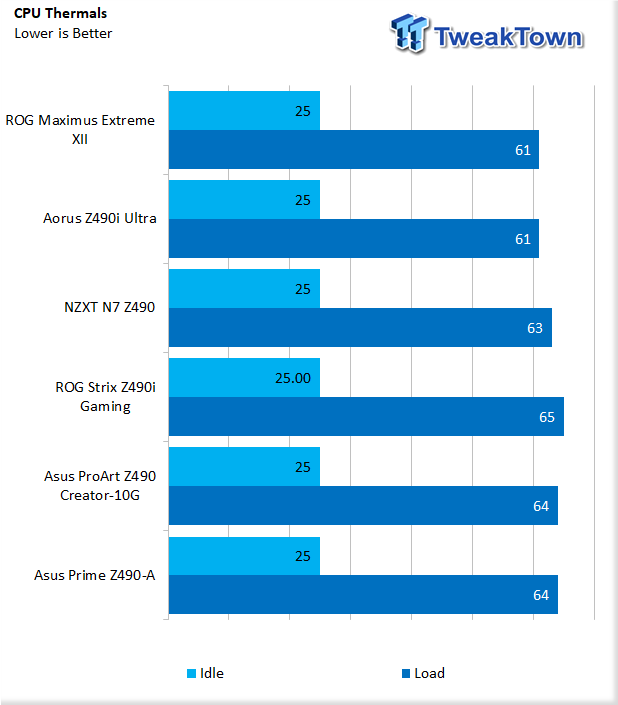
Thermals for the ProArt were 25c at idle and 64c peak during our testing.
Final Thoughts
The ProArt Z490 Creator has been a solid board overall but did have issues in my initial testing. These issues stemmed from using the Intel i225-V LAN controller and required me to disable and re-enable the LAN controller upon bootup every time. The problem was fixed with firmware updates from Intel rather quickly, and I do not currently have that issue. That said, the inclusion of the 10Gbe AIC meant these issues did not stop us from testing the motherboard, downloading drivers, benchmarks, etc.
Thunderbolt 3 was a fantastic addition to this BOM and enables creators to expand their needs with high speed or high capacity storage or even docks, monitors, etc.
What We Like
Thunderbolt: Integrated Thunderbolt 3 is rare these days!
10GBe: The addition of 10Gbe increases the overall value of the ProArt for those connecting to high-speed network infrastructure.
What Could Be Better
Intel i225-V: Even with many firmware fixes, the i225-v still has issues.
Wi-Fi: ProArt does not offer a Wi-Fi option.

Performance |
90% |
Quality |
90% |
Features |
95% |
Value |
85% |
Overall |
90% |
The ASUS ProArt Z490-CREATOR 10G is a fantastic motherboard that offers one of the best all around feature sets built around creators.

Related Tags

